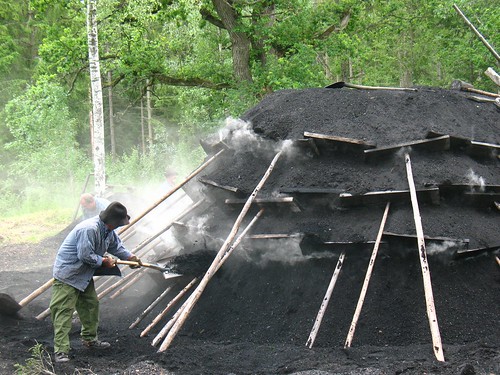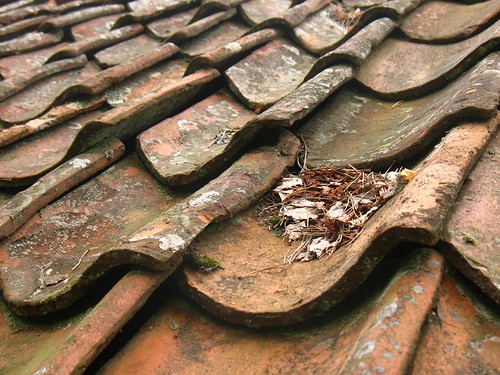The shot in Skottvång was forceful
One day this week we visited Skottvång Mining Museum (sorry, only Swedish website), about an hour west of Stockholm, Sweden. I am not sure exactly what Skottvång means, but Skott is a shot like from a gun, and tvång means to force someone or something to do something.
People have mined iron here since the 1500s, first with the help of fire and water, and later using gunpowder. The mining was only done during the winter in the early days, and men, women, and children all worked in the mine. In 1900 it became illegal for women and children to be miners. Volunteers have restored many of the buildings and every summer there are concerts with famous Swedish artists and theater for children. 
The ore was transported on sleighs to Åkers Styckebruk (Foundry) where it was melted down and made into cannons, among other things. The big cannon in the back was famous, because it was the first cannon that could be loaded from the back, not just the side. These two cannons are from the 1850s.
The day we where there was the day the charcoaling stack was lit to make charcoal. The forests in Central Sweden are littered with round black circles in the forest (nowadays usually covered by moss), that mark the old charcoaling places. It was hard work, you had to make sure the stack didn't get too much or too little oxygen - you didn't want the wood to burn up, and you didn't want the fire to go out totally either. 
Swedish tile roof, made locally probably. 
This is the tall building where the iron was lifted up out of the 900 feet deep mine.
More photos from this place here.




6 comments:
The "tall building" is called a "head house" or "hoist house" in english at least In Swedish it probably is called something like "The tall house where the ore is brought from below with great effort because it is so far below up to the surface"
I wonder about the history of this, human powered, then maybe animal powered, then water? and maybe steam?
Haha, the tall house is called 'lave' in Swedish :)
Oh, it was horse powered first, then steam, at least for the water pumps. I looked it up. Not sure about the hoist, maybe that was human powered. I know women were the ones that emptied the hoist bucket and sorted the iron.
Most likely the hoist was also horse-powered and water-powered.
Yes, the website confirms it:
"Från början hissade man upp malmen med hjälp av körvandring med hästar eller oxar. Två sådana inrättningar har funnits strax öster om Porthålets dagöppning. Andra kraftkällor som använts var stånggången, som byggdes 1797-1800 från Krampan och därefter ångmaskinen som installerades 1834 och så slutligen elkraften 1918."
I guess that the name has been built on two words, skott and vång.
"Vång" was a part of the village acreage before the villages were reorganized so that each farmer got his share in one plot.
Normally the land was divided into three "vångar", one for spring harvest (barley), one for autumn harvest (rye) and one resting ("i träda").
"Skott" can certainly be a shot in a mine but was also a form of local taxation in medieval Sweden.
Olle, that is really interesting about the name and thanks for looking up the facts about the power. I had no idea about the word 'vang', but now I know. It can't be a very common name, because I can't remember it from any other place. I love place names, they can tell so much. You learn a lot here on the blog! Thanks!
Post a Comment